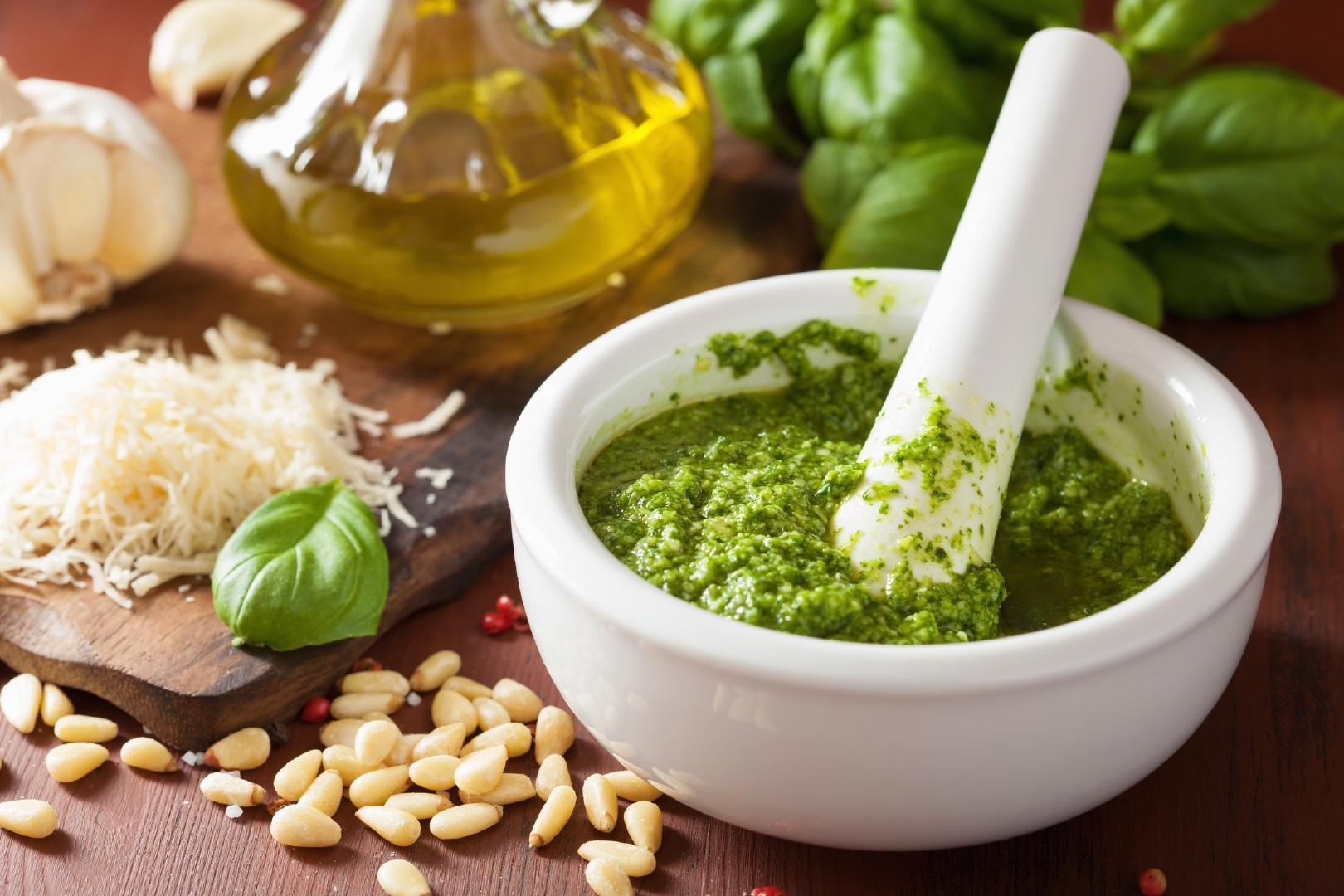For me, late summer is the perfect time to whip up a salad, says Martin Hollis, executive chef of The Old Course St Andrews. A lot of the best salad ingredients are at their tastiest at this time of year. With produce like avocados, garlic, lettuce, spring onions and spinach all in season, I recommend creating delicious batches of your favourite salads to use throughout the week.
The best thing about salads is that they lend themselves to most meals; add a piece of salmon for a healthy lunch or pop a side salad next to your breaded chicken dish as an addition or replacement to potatoes.
I’m going to talk you through how to make a basil pesto to drizzle over your salads. Having a jar of homemade pesto in your cupboard will mean you’re able to spice a meal up in seconds. Aside from making a great salad dressing, why not try mixing the basil pesto into your pasta dish for an instant flavour upgrade.
For this recipe you’ll need: 60g basil leaves, 10g pureed garlic, 50g pine nuts, 50g grated parmesan cheese, 125ml olive oil, salt and pepper to taste. What makes this recipe so great, too, is that all of the ingredients can be found at any supermarket.
Place the basil, garlic, pine nuts and parmesan in a food processor and blitz. Slowly pour the olive oil into your blitzed ingredients and season to taste (see tip below). If you have an electric food processor, you can pour it in slowly whilst the blades are still spinning. If not, simply take the ingredients out, place in a bowl and slowly mix in with a spoon. Store in an airtight jar.
I like to enjoy this pesto recipe with a nice pasta salad. I combine fusilli pasta with the pesto and then add in cherry tomatoes and a little more basil to sprinkle over the top. This is one of the few pasta-based recipes that taste marginally better cold than hot, so it makes the perfect weekday lunch. Alternatively, you can whip up a big batch to be added to the table at a buffet. That’s a sure fire way to get invited back!
Chef’s tip
Season your pesto with salt and pepper just before you’re about to use it. Salt tends to discolour basil, which can make it look wilted before its time.










